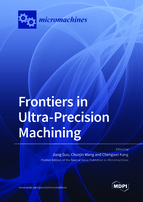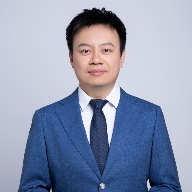Frontiers in Ultra-Precision Machining
A special issue of Micromachines (ISSN 2072-666X). This special issue belongs to the section "D:Materials and Processing".
Deadline for manuscript submissions: closed (15 December 2021) | Viewed by 37196
Special Issue Editors
Interests: intelligent precision machining; surface integrity; precision measurement
Special Issues, Collections and Topics in MDPI journals
Interests: ultra-precision machining; polishing/finishing; abrasive machining technology
Special Issues, Collections and Topics in MDPI journals
Interests: micro/nano manufacturing; precision machining; surface finishing; atomic and close-to-atomic scale manufacturing
Special Issues, Collections and Topics in MDPI journals
Special Issue Information
Dear Colleagues,
Ultra-precision machining is a multi-disciplinary research area that is an important branch of manufacturing technology. It targets achieving ultra-precision form or surface roughness accuracy, forming the backbone and support of today’s innovative technology industries in aerospace, semiconductors, optics, telecommunications, energy, etc. The increasing demand for components with ultra-precision accuracy has stimulated the development of ultra-precision machining technology in recent decades. Accordingly, this Special Issue seeks reviews and regular research papers on the frontiers of ultra-precision machining and will serve as a platform for the communication of the latest development and innovations of ultra-precision machining technologies.
Prof. Dr. Jiang Guo
Dr. Chunjin Wang
Dr. Chengwei Kang
Guest Editors
Manuscript Submission Information
Manuscripts should be submitted online at www.mdpi.com by registering and logging in to this website. Once you are registered, click here to go to the submission form. Manuscripts can be submitted until the deadline. All submissions that pass pre-check are peer-reviewed. Accepted papers will be published continuously in the journal (as soon as accepted) and will be listed together on the special issue website. Research articles, review articles as well as short communications are invited. For planned papers, a title and short abstract (about 100 words) can be sent to the Editorial Office for announcement on this website.
Submitted manuscripts should not have been published previously, nor be under consideration for publication elsewhere (except conference proceedings papers). All manuscripts are thoroughly refereed through a single-blind peer-review process. A guide for authors and other relevant information for submission of manuscripts is available on the Instructions for Authors page. Micromachines is an international peer-reviewed open access monthly journal published by MDPI.
Please visit the Instructions for Authors page before submitting a manuscript. The Article Processing Charge (APC) for publication in this open access journal is 2600 CHF (Swiss Francs). Submitted papers should be well formatted and use good English. Authors may use MDPI's English editing service prior to publication or during author revisions.
Keywords
- polishing
- grinding
- diamond turning
- micro-milling
- abrasive jet machining
- electrical discharge machining
- ion beam machining
- magnetic field-assisted machining
- ultrasonic field-assisted machining
- laser machining
Related Special Issue
- Frontiers in Ultra-Precision Machining, Volume II in Micromachines (19 articles)









